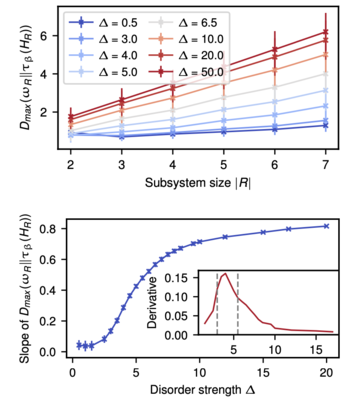Work on many-body localization in Communications Physics
Understanding the conditions under which physical systems thermalize is one of the long-standing questions in many-body physics. While it has been observed that generic quantum systems do thermalize, rather little is known about the precise underlying mechanism. Furthermore, instances in which thermalization is hindered for many-body systems have been uncovered, now known as many-body localization, offering promising insights into the mechanisms that underlie thermalization. In this work, we derive upper and lower bounds on the size of a heat bath required to thermalize a many-body localized system, for a broad class of collision models. To obtain these bounds, we employ a recently developed tool from quantum information theory known as the convex split lemma. We apply our results to the disordered Heisenberg chain, which we study numerically, and we characterize the robustness of the MBL phase in this system for the family of thermalization processes considered, in terms of the required bath size. Part of the significance of this work, published in Communications Physics (Nature), stems from transferring tools from resource-theoretic quantum thermodynamics to the study of interacting quantum many-body systems.
News from Jan 04, 2021
